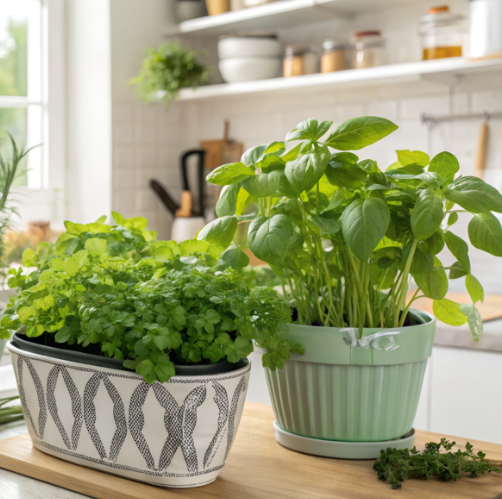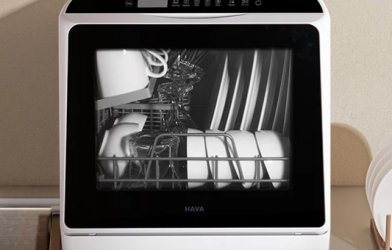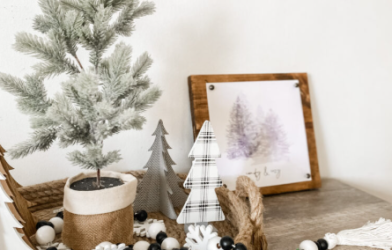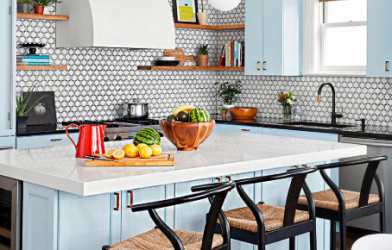Subtotal $0.00
Have you ever thought about starting your own kitchen herb garden? Growing your own herbs is not only rewarding but also enhances your cooking with fresh flavors and fragrances. It’s easier than you think, and with a few simple steps, you can cultivate a vibrant herb garden right in your kitchen.
1. Find the Ideal Spot
The key to a successful herb garden is sunlight. Herbs need at least 6 hours of direct sunlight a day, so find a spot in your kitchen or home where your plants can get ample natural light. A sunny windowsill, a well-lit balcony, or even a spot near your kitchen sink can work wonders.
If your home doesn’t receive much natural light, don’t worry! There are plenty of indoor gardening systems available that provide the necessary light for your herbs to thrive. Consider investing in a grow light or a hydroponic system to keep your herbs happy.
2. Choose the Right Herbs
Selecting the right herbs is the fun part! Think about the herbs you love to use in your cooking and the space you have available. Some herbs, like basil, thyme, and oregano, have similar needs and can be grouped together in one container. Others, such as rosemary, lavender, and sage, also thrive in similar conditions.
When planning your garden, ensure that each herb has the space and growing conditions it needs, such as the right amount of sunlight and water. A little research into the specific needs of each herb will help them flourish together in your kitchen.
3. Pick the Perfect Containers
The size and type of container you choose will depend on how many herbs you want to grow and the space available in your kitchen. Raised garden beds or large containers are ideal for growing multiple herbs. For smaller spaces, compact containers or window boxes work just as well.
You can also get creative and repurpose containers like old milk cartons, tin cans, or plastic jugs—just be sure they have proper drainage to prevent water from pooling and causing root rot.
4. Plant Your Herbs
You can either start from seeds or purchase small herb plants from a nursery. Starting from seeds takes time, but it’s a rewarding process, while buying pre-grown plants gives you a jump start. If you’re starting from scratch, remember that the soil should be well-draining and loose. Mix in some compost or moss for added nutrients.
Water your plants thoroughly after planting, but avoid over-watering. A helpful tip is to place an ice cube on the soil to prevent over-watering. Be sure to let the soil dry out slightly before watering again.
5. Care for Your Herb Garden
Caring for your herbs is key to keeping them healthy and vibrant. Make sure you water them regularly and keep an eye on the specific needs of each herb. Trimming your herbs will encourage new growth and prevent them from becoming leggy. If you spot any pests, use a non-toxic dish soap and water solution to spray the affected plants and keep them pest-free.
If you notice your herbs becoming root-bound, consider re-potting them into larger containers to give the roots more room to grow.
6. Harvest and Enjoy
Once your herbs start growing, it’s time to start harvesting! Regularly trimming and using your herbs will promote new growth and keep the plants healthy. When harvesting, avoid cutting too much off at once—take a few leaves at a time and be mindful of leaving enough of the plant to continue growing.
The best part of growing a kitchen herb garden is incorporating your fresh herbs into your cooking. Whether you’re adding basil to pasta or thyme to roasted vegetables, nothing beats the flavor of homegrown herbs.
Conclusion
Starting a kitchen herb garden is a simple yet incredibly rewarding project that can elevate your cooking and bring joy to your daily routine. With the right light, herbs, containers, and care, you’ll have a thriving garden that adds fresh flavors to your meals. Get started today, and soon you’ll enjoy the benefits of your own culinary paradise right in your kitchen!












